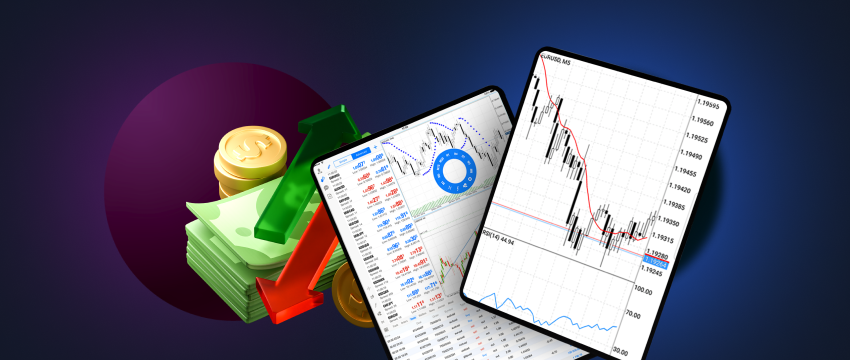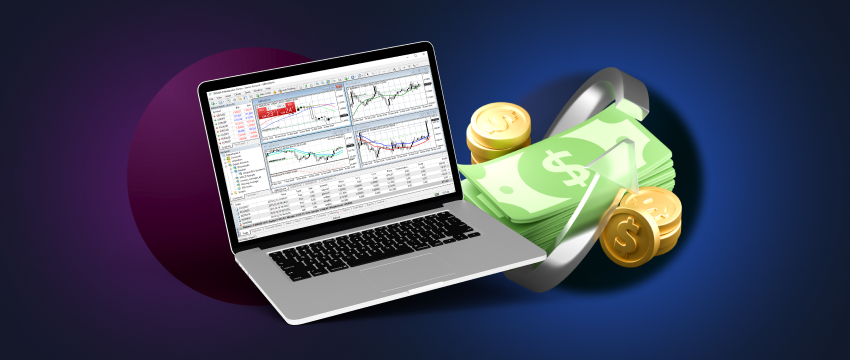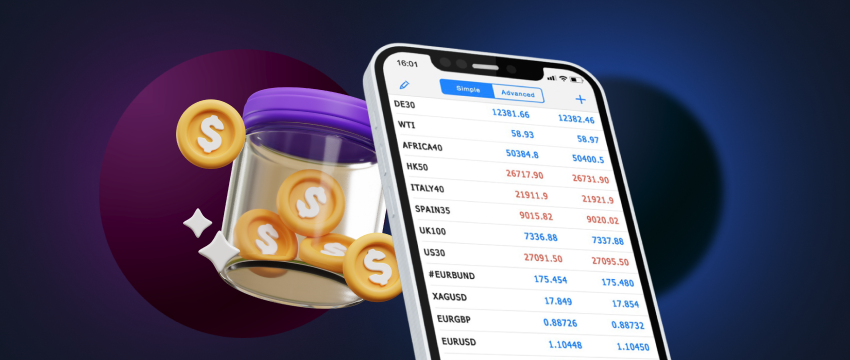For a beginner investor, the term “price action trading” may be unfamiliar. It is however one of the most basic trading strategies amongst others, and also one of the oldest. But what exactly is price action trading?
Price action refers to the movement or change of a financial instrument’s price over time. It forms the basis for all technical analysis. Traders may look to price action to identify any potential trends and make subsequent trading decisions accordingly.
Price action trading involves the trader observing how prices fluctuate in response to external factors. These may include economic reports or releases, geopolitical uncertainties or other market news, investor sentiment, and so forth. Through this monitoring, traders will likely spot opportunities for buying or selling an instrument.
The history of price action trading
Price action trading is said to date back to the 1600s. Japanese rice traders used candlestick charting as a form of price action analysis. In the 19th century, western traders adopted this strategy. Notable figures included Charles Henry Dow, Richard Wyckoff, and Jesse Livermore.
- Charles Dow co-founded The Wall Street Journal and created the Dow Jones Industrial Average. He established the foundation for modern technical analysis. Dow’s research emphasized the importance of trends in the market. He believed that market prices reflect all available information—key principles in price action trading.
- Richard Wyckoff: Another popular figure who expanded on the study of price movements by developing several investing principles that revolved around understanding market psychology through price action. The Wyckoff Method remains in use today.
- Jesse Livermore, an influential trading figure in the 1900s, was renowned for his skill in reading prices. He relied heavily on price patterns and market behaviors. He would then execute trades based on how prices fluctuated.

Why is price action trading popular?
Price action trading is popular for its simplicity, versatility across markets, clear market insights, and independence from lagging indicators.
Price action trading is considered simple because it’s easy to understand and apply. Rather than rely on complex indicators, it instead focuses on the raw price chart. This makes it an appealing option for beginners who come with little skill or expertise.
This form of trading also makes it easier to determine market sentiment, providing a clearer picture of whether a market is bearish or bullish. Price action trading is flexible, allowing traders to use it across currency pairs, hàng hóa, cổ phiếu, and more.
Finally, price action trading does not depend on lagging technical indicators in the way that other trading strategies do. This means that traders are able to make trading decisions in real-time.
The challenges
All this being said, it does not mean that price action trading is without challenges. For one, while the strategy is relatively easy to deploy, it still requires practice to get right. This requires investing time into ongoing learning to widen your scope of knowledge and become more proficient.
Price action investing also requires focus and discipline to avoid making trading decisions based on emotions rather than knee-jerk reactions to price fluctuations. This means putting in place a proper trading plan that will steer how your investment strategy is applied. Price action investing is also highly subjective.
No two traders interpret a chart in exactly the same way. This makes the strategy vulnerable to bias and emotional behaviors, which can lead to inconsistent results, especially for newer traders who haven’t yet mastered control over their emotions.
Price action investing also require a high level of attention as traders must be vigilant in monitoring the markets. Unexpected market volatilities can quickly cause aggressive price spikes (up or down), so having the time to be able to react in the moment is crucial.
Critical aspects of price action trading
Knowing how to identify support and resistance levels is important in price action investing. Support denotes a price level where the asset tends to halt its decline and potentially bounce back. Resistance is a level where the asset encounters difficulty moving upwards. Price action traders use these to pinpoint potential entry or exit points.
Additionally, traders using this strategy must properly understand all forms of trends, uptrend, downtrend và sideways trend. This is the direction in which an asset’s price is moving, which should typically align with market momentum. Traders must also know how to read candlestick charts to determine the extent of a price change over a specific window of time.
The candlesticks represent opening price, closing price, the highest point and the lowest point during that window. Different candlestick patterns exist like the hammer, shooting star, doji, among others.
Other common price patterns that emerge on price charts are triangles, head and shoulders, etc, which indicate potential price reversals or the continuation of trends. These patterns are important for traders to determine the best times to enter or exit trades.

Key tips for price action trading
If you’re a beginner and considering price action trading, there are several factors to keep in mind before getting started:
Explore, Learn, Succeed
Learn as much as you can about the fundamentals of trading and key concepts that are likely to impact outcomes.You can acquire this education in many ways. The internet offers a wealth of trading-related resources to expand your knowledge.
However, if you want to be sure that what you’re learning is not only accurate but also credible, consider looking to see what your broker offers. Reputable brokers usually give their traders access to learning tools that includes blogs, eBooks, videos, webinars, và podcasts.
Additionally, consider attending in-person seminars or exhibitions if the opportunity arises, both of which facilitate information exchange. If travelling to events is not possible, there are also online community forums that bring traders together in one centralised online space to share ideas and information.
Practice Makes Perfect
In addition to conventional learning, signing up for a demo account will also give you more practical investment experience. With access to a simulated trading environment, you can practice opening and closing trades and gauge outcomes, using virtual funds.
With a demo account, your money isn’t at risk, allowing you ample time to build confidence. You can develop the skills needed to engage in real trading without pressure. A demo account also lets you gain experience in technical analysis, which is essential for price action trading.
The Power of a Good Plan
Before trading in a live environment, create a trading plan and incorporate risk management techniques to minimize losses. Keep your plan simple, but include your goals, trading rules, acceptable risk level, and budget.
Keep It Simple
Consider tracking your transactions once you get started so that you have a record not only of the trades you executed but the rationale behind each one. In this way, you will be able to identify a pattern in your decision making process and make tweaks as and when required.

Achieve Trading Success with T4Trade
T4Trade is a popular global broker with clients worldwide. The broker offers top-tier, 24/5 multilingual customer support, cutting-edge nền tảng giao dịch, và flexible trading conditions. T4Trade is also a great go-to resource for traders looking to learn more about forex trading in a user-friendly way.
A variety of videos, podcasts, eBooks, webinars, and videos-on-demand are curated by in-house specialists, catering to all types of traders.
T4Trade traders can also choose from a wide range of trading instruments across 6 asset classes, and enjoy flexible leverage, competitive spreads, fast trade execution and seamless deposit and withdrawal options. Traders can also choose from multiple trading accounts that best suit their needs and individual preferences.
Khước từ trách nhiệm: This material is for general informational and educational purposes only and should not be considered investment advice or an investment recommendation. T4Trade is not responsible for any data provided by third parties referenced or hyperlinked in this communication.




